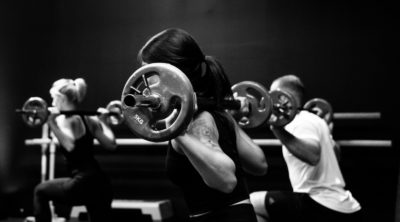
At the onset of puberty, hormonal changes trigger physical changes like rapid muscle growth, spurts in height, and weight gain in both boys and girls. Take a look at the information and height-weight charts for teens and adults presented in this Buzzle article, if the question "what should I weigh for my age and height" is bothering you.
Every individual has a different body composition (amounts of muscle, fat and bone). An athlete with a higher body mass index (BMI) (because he/she has extra muscle), will not be considered as overweight; but a person of the same age, height and weight may be considered overweight, because of too much body fat. Even though, both of them have the same weight, age and height, one is ‘fit’ and another is ‘not fit’. To avoid this confusion and to clear all your doubts regarding the universal query ‘am I overweight’, here is some important information.
Height and Weight Charts For Teens
Faster growth in kids can be noticed at the age 8 or sometimes not until age 14 or so. Genetic factors also determine the physical growth of a child. So, it is perfectly normal for two kids of the same age to have different weights and heights. The following figures should be used as guidelines only.
| Average Height and Weight For Boys | Average Height and Weight For Girls | |||
| Age | Height | Weight | Height | Weight |
| in Years | in Inches | in Pounds | in Inches | in Pounds |
| 12 – 13 | 58 – 62 | 85 – 100 | 60 – 63 | 95 – 105 |
| 14 – 15 | 63 – 66 | 105 – 125 | 63 – 64 | 105 – 115 |
| 16 – 17 | 67 – 70 | 130 – 150 | 64 | 115 – 120 |
| 18 – 20 | 68 – 70 | 150 – 160 | 64 | 125 – 130 |
Height and Weight Charts For Adults
| Height Weight Chart: Men* | |||
| Height | Small Frame | Medium Frame | Large Frame |
| 5’1″ | 123 | 134 | 145 |
| 5’2″ | 125 | 137 | 148 |
| 5’3″ | 127 | 139 | 151 |
| 5’4″ | 129 | 142 | 155 |
| 5’5″ | 131 | 145 | 159 |
| 5’6″ | 133 | 148 | 163 |
| 5’7″ | 135 | 151 | 167 |
| 5’8″ | 137 | 154 | 171 |
| 5’9″ | 139 | 157 | 175 |
| 5’10” | 141 | 160 | 179 |
| 5’11” | 144 | 164 | 183 |
| 6’0″ | 147 | 167 | 187 |
| 6’1″ | 150 | 171 | 192 |
| 6’2″ | 153 | 175 | 197 |
| 6’3″ | 157 | 179 | 202 |
| Height Weight Chart: Women* | |||
| Height | Small Frame | Medium Frame | Large Frame |
| 4’10” | 100 | 115 | 131 |
| 4’11” | 101 | 117 | 134 |
| 5’0″ | 103 | 120 | 137 |
| 5’1″ | 105 | 122 | 140 |
| 5’2″ | 108 | 125 | 144 |
| 5’3″ | 111 | 128 | 148 |
| 5’4″ | 114 | 133 | 152 |
| 5’5″ | 117 | 136 | 156 |
| 5’6″ | 120 | 140 | 160 |
| 5’7″ | 123 | 143 | 164 |
| 5’8″ | 126 | 146 | 167 |
| 5’9″ | 129 | 150 | 170 |
| 5’10” | 132 | 153 | 173 |
| 5’11” | 135 | 156 | 176 |
| 6’0″ | 138 | 159 | 179 |
* – Given weight is in Pounds
It is necessary to know that height-weight calculators or tables are prepared by using actuarial tables or other statistics compiled from a large population group, to decide what weight corresponds to the highest probability for longevity and health. And it is quite possible that the population measured may not resemble you, and so the healthy weight goal offered to you could be inaccurate.
The best way to know the ideal weight for your age and height is to measure body fat percentage, or the ratio of fat to lean muscle mass. Measuring the fat with calipers is the easiest way of knowing body fat percentage at home. You can yourself measure skin folds and body circumferences. Other common methods of measuring body fat composition include hydrostatic weighing and bio-electrical impedance (using electric current to measure lean body mass). Some of the less common methods of measuring body fat are measuring body fat with the help of X-rays, ultrasound or infrared radiation.
- Fit men have 14 to 17% body fat.
- Fit women have 21 to 24% body fat.
- Male athletes have 6 to 13% body fat.
- Female athletes have 14 to 20% body fat.
The ideal body fat percentage varies mainly according to age, sex and the physical activity of the individual. But it is a fact that some female athletes have body fat as low as 10 % and some male athletes had lower than 4 percent body fat. So, it can be observed that other than the above mentioned factors, genetic factors also influence the body-fat ratio. You can always measure body fat percentage with the help of a physician or with the help of a physical trainer from a health club. For those who do not have the time to visit a gym or to consult a doctor, calculating body mass index can be equally helpful.
You may use the following formula to calculate your BMI:
- As per SI Units: BMI (in kg/m2) = mass (in kg)/(height in meters)2
- Imperial Units 1: BMI = mass (lb) × 703/(height (in))2
- Imperial Units 2: BMI = mass (lb) × 4.88/(height (ft))2
Following conclusions can be derived after calculating the BMI:
| BMI Calculated | Conclusion |
| BMI 18.5 to 25 | Normal or optimal weight |
| BMI > 25 | Overweight |
| BMI < 18.5 | Underweight |
| BMI < 17.5 | Extremely underweight |
| BMI = 30 or BMI > 30 | Obese |
| BMI = 40 or BMI > 40 | Morbid obesity |
Accuracy of the conclusion will depend upon how well you match the population group, because age, sex, fitness level and ethnicity can affect weight to height ratios, independent of actual body composition. But as the question ‘what is my ideal weight for my height and age’ is disturbing you, the above method will surely help you know whether you are near to the upper range and whether there is a chance of being obese in the future. You can use a waist measurement chart and you can also calculate waist-hip ratio and measure your upper arm circumference. These figures can be compared with height, as these can serve as good additional indicators of body composition. A ‘large waist’ measurement indicates high body fat while a ‘large bicep’ may indicate high muscle mass.
Sometimes, hormonal imbalance and other related causes can lead to unexplained weight gain in women. So, before opting for a weight loss diet, men and women should consult their physicians for the correct diagnosis of weight gain. This will help avoid further health complications. At the same time, I would like to tell you that you should not become very obsessed with your height and weight because ‘being healthy’ is more important than anything else.


